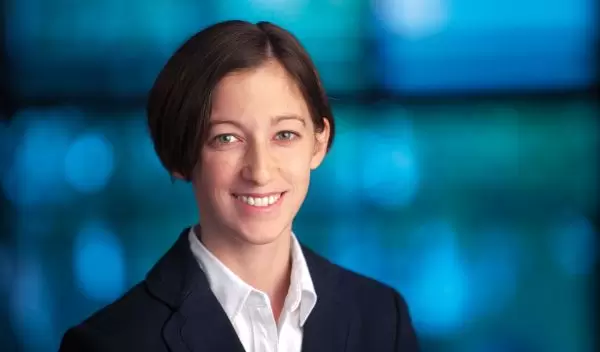
Researcher studies how different brain regions interact during tasks
Danielle Bassett has an unusual take on studying the brain.
Bassett, the Skirkanich Assistant Professor of Innovation in the Department of Bioengineering at the University of Pennsylvania, a physicist by training, specializes in studying complex systems, that is, systems made up of individual pieces that interact with each other in complicated ways--materials, for example.
"When you look at the particles that make up materials, you can see the different forces that the particles are putting on each other," says the National Science Foundation (NSF)-funded scientist. "It looks like a web, or tree, with complicated loops. Looking at the forces from the inside, you can see the complicated networks."
She sees the brain similarly, as an example of an intricate system of connected interacting parts, including cells, neurons and other circuitry; thus, she is using the same tools with which she studies other complex systems to gain a better understanding of how the brain works. "Our approach focuses on the network level, which distinguishes our methods from traditional neuro-imaging," she says.
Using mathematical computer algorithms she and her collaborators developed, she studies how different brain regions interact with one another while someone is engaged in a task. The goal is to understand how this interaction enables individuals to think, perform tasks, interact with the environment, change their behavior, learn and retain information and hold on to memories.
"We develop analytic tools to probe the hard-wired pathways and transient communication patterns inside the brain to try to identify organizational principles, and develop novel diagnostics of disease," she says, with the idea ultimately of designing "personalized therapeutics for rehabilitation and treatment of brain injury, neurological disease and psychiatric disorders."
The work has the potential to affect diagnosis and treatment of such brain disorders as Alzheimer's disease, schizophrenia, addiction, stroke, autism, epilepsy and Parkinson's disease, possibly even allowing clinicians to identify these conditions--and intervene--earlier.
Bassett has received NSF grants that support her work, including an award to hold a May 2014 workshop on quantitative theories of learning, memory and perception, and a computational neuroscience award funding collaborative research with Fabio Pasqualetti, assistant professor of mechanical engineering at the University of California, Riverside. The latter is examining mapping and control of large scale neuro-circuitry, and noninvasive techniques to stimulate the brain.
Bassett also is a recent recipient of one of this year's prestigious MacArthur fellowships, a $625,000 no-strings-attached award, popularly known as a "genius" grant. These go to talented individuals who have shown extraordinary originality and dedication in their fields, and are meant to encourage beneficiaries to freely explore their interests without fear of risk-taking. She plans to use the money to advance her research.
Bassett's experiments involve using MRI technology to determine how brain circuits work together while learning a motor task, in this case, a series of finger movements similar to piano arpeggios. They perform them using a button box that resembles a keyboard.
"We want to see what happens when you learn how to move your body in a particular way," she says. "People come into the MRI and learn these over the course of six weeks, one session of 90 minutes every two weeks. We teach them six sequences at the beginning of the experiment, and they practice the same six over and over again."
Using brain imaging data of people learning this task over three distinct time periods, Bassett and colleagues found that they could predict a person's ability to learn based on the brain's flexibility, or the ability of different areas of the brain to connect in different combinations, and in identifying existing brain functions that come into play when learning a new behavior.
She found that people with more "flexible" brain networks learn better. She compares it to group dancing when explaining what she means by flexible.
"First you dance with one person, then you switch," she says. "The same thing happens in brain regions. The number of brain regions involved is equal to their flexibility; the more a brain region switches partners, the more flexible it is."
Thus far, the study has involved only young adults, but she hopes to conduct similar experiments on older people and children.
"I would expect kids to be more flexible, and older people to be less flexible," she says.
The hope is that the basic science ultimately will lead to brain stimulation techniques that will encourage the brain to become more flexible and, when injured, recover faster.
"For example, you could intervene after a stroke so someone can relearn and recuperate faster," she says. "That is our incentive, to determine whether we can use brain stimulation to enhance flexibility, quickening rehabilitation after injury."
